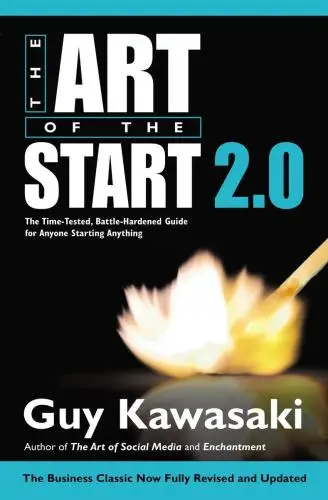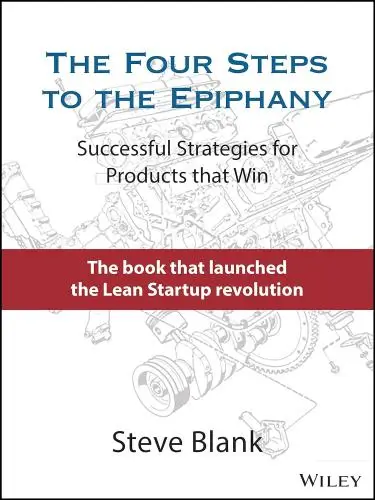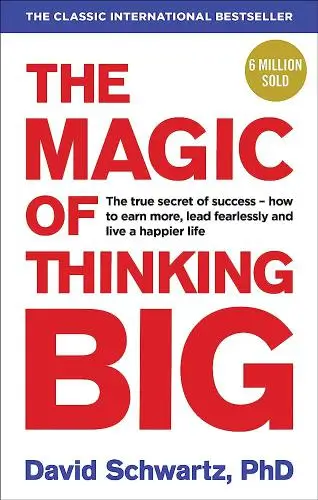
How Google Works
What is How Google Works about?
How Google Works by Eric Schmidt offers an inside look at the tech giant's unique culture and innovative approach to business and management. Empowering creativity, valuing smart data over hierarchy, and maintaining a flexible approach to problem-solving are among the key insights shared. This book is a must-read for those interested in understanding how Google fosters an environment of continuous innovation and remains at the forefront of the tech industry.
About the Author
Eric Schmidt, former CEO and Chairman of Google, co-authors compelling narratives on technology, innovation, and leadership. His works, like "The New Digital Age" and "How Google Works," dive deep into the ethos of Silicon Valley's success and the digital future. Schmidt's writing, informed by his executive insight, marries the technical with the visionary, offering readers a unique perspective on shaping the world through technology. His themes often explore the intersection of business acumen and technological advancement, making his books a beacon for aspiring leaders and tech enthusiasts alike.
10 Key Ideas of How Google Works
Hire Smart Creatives
Smart creatives are not confined to specific tasks. They combine technical knowledge, business expertise, and creativity. Hiring such individuals fosters innovation because they look at problems through a unique lens, challenge the status quo, and drive forward-thinking solutions. Encouraging an environment where smart creatives thrive means promoting openness, collaboration, and a culture that values risk-taking and learning from failure.
Learn DeeperCultivate a Learning Environment: Encourage continuous learning and skill development within your team or organization. This could mean providing access to online courses, organizing workshops, or even setting aside time for employees to work on personal projects that fuel their creativity.
Promote Open Communication: Foster an environment where everyone feels comfortable sharing their ideas and opinions. Regular brainstorming sessions, open forums, or even anonymous suggestion boxes can help in gathering diverse perspectives.
Implement a 'Fail Fast, Learn Faster' Philosophy: Normalize the concept of learning from failures rather than penalizing them. This can be done by celebrating the lessons learned from failed projects and encouraging experimentation within reasonable boundaries.
Encourage Cross-Disciplinary Collaboration: Break down silos between departments by encouraging projects that require input from various areas of expertise. This could involve forming project teams with members from different departments or organizing cross-functional workshops.
- Example
Google is known for its 20% project policy, where employees are encouraged to spend 20% of their time working on projects that interest them, even if these projects don't fall within their regular job responsibilities. This policy has led to the creation of some of Google's most popular products, such as Gmail and AdSense.
- Example
Pixar Animation Studios encourages its employees to take classes at Pixar University, regardless of their department or role. Classes range from painting to storytelling, promoting a culture of continuous learning and creative thinking across the entire organization.
Cultivate an Open Culture
An open culture encourages sharing ideas, constructive criticism, and collaboration across all levels of the organization. This transparency fosters trust among employees, accelerates problem-solving, and facilitates the free flow of information, which is crucial for innovation and quick decision-making. Encourage forums, group discussions, and platforms where ideas can be freely exchanged.
Learn DeeperFoster Open Communication: Start by creating an environment where everyone feels safe to share their ideas and feedback. This could be as simple as having regular team meetings where all members are encouraged to speak up or setting up an anonymous suggestion box.
Implement Transparent Processes: Make sure that decision-making processes are transparent. Share the 'why' behind decisions with your team. This can be done through emails, team meetings, or a shared digital platform where updates are regularly posted.
Encourage Cross-Departmental Collaboration: Organize projects or meetings that require members from different departments to work together. This not only fosters innovation but also helps in breaking down silos within the organization.
Promote Constructive Feedback: Train your team on how to give and receive feedback constructively. Encourage them to focus on the idea or issue at hand rather than the person, fostering a culture of improvement rather than criticism.
- Example
A tech startup implements a weekly 'Innovation Hour' where team members from different departments come together to brainstorm solutions to a common problem. This session is open for anyone to attend and contribute, regardless of their role or seniority.
- Example
A marketing firm uses an online platform where employees can anonymously submit their ideas for new campaigns. Once a month, these ideas are reviewed in a team meeting, and the person who submitted the chosen idea is then recognized and rewarded, though they have the option to remain anonymous if they prefer.
Think 10x, Not 10%
Aiming for a 10x improvement, rather than a mere 10% change, pushes boundaries and encourages thinking outside the box. This ambitious goal setting stimulates creativity and innovation, as it requires reimagining processes or products entirely, rather than making incremental improvements. It's about solving problems in fundamentally new ways, which can lead to breakthrough innovations.
Learn DeeperSet Audacious Goals: Instead of aiming for a modest improvement in your projects or personal goals, challenge yourself to envision a tenfold increase in results or impact. This could mean rethinking the scale of your ambitions entirely.
Rethink the Process: Look at the processes or methods you currently use and ask yourself how they could be completely transformed. Don't just consider small adjustments; think about starting from scratch with a new approach.
Encourage Creative Brainstorming: Regularly set aside time for brainstorming sessions where no idea is too bold. Encourage yourself and others to think freely without the constraints of current limitations or resources.
Learn from Other Industries: Often, breakthrough innovations come from applying solutions from one field to another. Look outside your immediate area of expertise or interest for inspiration and novel approaches.
Embrace Failure as a Learning Tool: When aiming for 10x improvements, failures are inevitable. View these not as setbacks but as valuable learning experiences that guide your next attempts.
- Example
Google's self-driving car project, Waymo, is an example of 10x thinking. Instead of focusing on making cars slightly safer or more fuel-efficient, Google aimed to revolutionize transportation by removing the need for a human driver altogether.
- Example
SpaceX's goal to make space travel affordable and sustainable by developing reusable rockets is another instance of 10x thinking. Rather than improving existing rocket technology incrementally, SpaceX reimagined rocket design and launch operations to reduce costs by an order of magnitude.
Bet on Technical Insights
Technical insights can lead to revolutionary products or services. These insights come from a deep understanding of technology and its potential applications. By focusing on these insights, companies can develop unique offerings that meet unaddressed needs or significantly improve upon existing solutions. Investing in research and development, and staying abreast of technological advancements, is key to gaining these insights.
Learn DeeperStay Curious About Technological Trends: Make it a habit to read about the latest developments in technology. Websites like TechCrunch, Wired, or even specific sections of mainstream news outlets can keep you informed. This doesn't mean you need to understand every detail but being aware of what's happening can spark ideas.
Engage with Tech Communities: Join forums, social media groups, or local meetups focused on technology. Engaging with others who share your interest can provide insights and perspectives you might not have considered. It's also a great way to stay motivated and connected.
Experiment and Build: If you have an idea, try to build a prototype, no matter how basic. Tools like Raspberry Pi, Arduino, or even software development platforms like GitHub offer accessible ways to start bringing your ideas to life. Learning by doing is incredibly effective.
Take Online Courses: Platforms like Coursera, edX, or Udacity offer courses on emerging technologies and their applications. These can range from data science to blockchain, and beyond. Investing time in structured learning can deepen your understanding and uncover new areas of interest.
Attend Tech Conferences or Webinars: These events not only provide insights into where technology is headed but also offer networking opportunities. Hearing from experts and innovators can inspire new ideas and approaches.
- Example
A software developer notices the increasing interest in blockchain technology and decides to explore its potential beyond cryptocurrencies. By attending webinars, participating in forums, and experimenting with code, they develop a decentralized application (DApp) that streamlines supply chain management for small businesses.
- Example
An educator, aware of the growing importance of artificial intelligence (AI) in various fields, takes online courses to understand its fundamentals. They then integrate AI-based tools into their teaching methods, enhancing student engagement and personalizing learning experiences.
Deeper knowledge. Personal growth. Unlocked.
Unlock this book's key ideas and 100+ more. Learn with quick, impactful summaries.
Read Full SummarySign up and read for free!
How Google Works Summary: Common Questions
Experience Personalized Book Summaries, Today!
Discover a new way to gain knowledge, and save time.
Sign up for our 7-day trial now.
No Credit Card Needed

Similar Books

Venture Deals
Brad Feld
Anything You Want
Derek Sivers
Running Lean
Ash Maurya
Blitzscaling
Reid Hoffman
Founders at Work
Jessica Livingston
The Startup Owner's Manual
Steve Blank
The Art of the Start 2.0
Guy Kawasaki
The Four Steps to the Epiphany
Steve Blank
Business Adventures
John Brooks
Sam Walton
Sam Walton
Purple Cow
Seth Godin
Moneyball
Michael LewisTrending Summaries

Peak
Anders Ericsson
Never Split the Difference
Chris Voss
Smart Brevity
Jim VandeHei
The Psychology of Money
Morgan Housel
The First 90 Days
Michael D. Watkins
Atomic Habits
James Clear
Thinking, Fast and Slow
Daniel Kahneman
The Body Keeps the Score
Bessel van der Kolk M.D.
The Power of Regret
Daniel H. Pink
The Compound Effect
Darren Hardy
How to Win Friends & Influence People
Dale Carnegie
Eat That Frog!
Brian Tracy
The Magic of Thinking Big
David J. Schwartz
Drive
Daniel H. Pink
Essentialism
Greg McKeownNew Books

The Millionaire Fastlane
MJ DeMarco
Losing My Virginity
Richard Branson
Venture Deals
Brad Feld
48 Days to the Work You Love
Dan Miller
Anything You Want
Derek Sivers
Running Lean
Ash Maurya
Blitzscaling
Reid Hoffman
The Founder's Dilemmas
Noam Wasserman
Founders at Work
Jessica Livingston
The Startup Owner's Manual
Steve Blank
The Art of the Start 2.0
Guy Kawasaki
The Four Steps to the Epiphany
Steve Blank
Flash Boys
Michael Lewis
Crush It!
Gary Vaynerchuk
